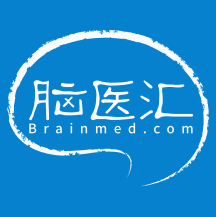第一作者:高干1,陈艳艳2
通讯作者:尚爱加1
其他作者:陶本章1,孙梦纯1,白少聪1
作者单位:1中国人民解放军总医院第一医学中心神经外科医学部,2中国人民解放军第960医院泰安院区麻醉科
Gao G, Chen Y, Tao B, Sun M, Bai S, Shang A. Early surgical intervention with antibiotic treatment for congenital dermal sinus with central nervous system infection: a retrospective study of 20 cases [published online ahead of print, 2022 Mar 2]. World Neurosurg. 2022;S1878-8750(22)00249-2. doi:10.1016/j.wneu.2022.02.102
前 言
目 的
本文章通过回顾分析20例先天性皮毛窦合并中枢神经系统感染患者的治疗过程以及随访结果,系统的研究评价此病的治疗方法及预后情况,探讨先天性皮毛窦合并中枢神经系统感染的外科治疗方法及其疗效。
方 法
回顾性分析研究2014年1月至2020年10月解放军总医院第一医学中心神经外科收治的先天性皮毛窦合并中枢神经系统感染的患者20例。其中男性9例,女性11例。患者年龄为2月至264月,中位数为96.5月。病程为5天至10年。所有患者术前均行脊椎MRI检查以明确瘘管的走行及其是否与椎管内相通、有无合并疾病(如脊髓拴系等)及其严重程度。所有患者入院后均行血常规、C反应蛋白、降钙素原、红细胞沉降率等检查,条件允许可进一步行脑脊液相关检查。明确诊断后立即行皮毛窦切除术,同时一并处理所合并的脊髓拴系等疾病。所有患者术后7天复查血常规、C反应蛋白、降钙素原、红细胞沉降率,评估感染控制情况。随访方法包括临床随访和影像学随访(MRI),采用脊柱裂神经功能量表(spina bifida neurological scale,SBNS)针对运动功能、反射和大小便功能进行评分,评估术后症状改善情况。
结 果
表1. 20例先天性皮毛窦合并中枢神经系统感染患者的临床资料

注:SBNS评分为脊柱裂神经功能量表


图2. 表1中例11患者的皮肤外观和MRI资料 A.术前瘘口周围皮肤红肿,有渗液流脓;B~C.术前头颅弥散加权成像可见双侧脑室枕角内有脓性物质堆积,脑室明显增大,存在脑积水表现;D.术前腰骶椎矢状位MRI T2加权成像(T2WI)可见脊髓圆锥低位,呈脊髓拴系表现,椎管内有异常炎性物质堆积;E.术后3个月腰骶椎T2WI可见椎管内异常炎性物质清除彻底,脊髓圆锥形态恢复正常;F.术后3个月头颅MRI平扫见脑积水基本消失,脑室内脓性物质消失。
讨 论
结 论
先天性皮毛窦患者腰骶部“针尖样”皮肤窦道更容易诱发中枢神经系统感染。对于先天性皮毛窦合并中枢神经系统感染的患者,早期手术治疗结合2-4周疗程的抗生素治疗可有效控制感染,保护神经功能。
通讯作者简介
尚爱加 教授
中国人民解放军总医院第一医学中心神经外科医学部
脊髓脊柱科主任,主任医师,博士导师
国家卫健委全国出生缺陷培训专家委员会先天神经畸形专业组组长
中华医学会神经外科分会脊柱脊髓学组委员
中国医师协会小儿神经外科专家委员会委员
专业特色为脊髓脊柱疾病和小儿神经外科疾病,主持国家重点研发计划专项、国家自然科学基金面上项目、首都特色课题等国家/省部级课题7项
参考文献
(上下滑动查看更多)









